Abstract
Bott, Thomas L. (University of Wisconsin, Madison), Janet S. Deffner, Elizabeth McCoy, and E. M. Foster. Clostridium botulinum type E in fish from the Great Lakes. J. Bacteriol. 91:919–924. 1966.—The intestinal contents of more than 3,000 fish from Lakes Erie, Superior, Huron, and Michigan were examined for Clostridium botulinum type E. Demonstration of the organism was accomplished by identifying its toxin in liquid cultures inoculated with material from the alimentary tract. Incidence figures, expressed as per cent of the fish tested, were: Lake Erie, 1%; Lake Superior, 1%; Lake Huron, 4%; the main body of Lake Michigan, 9%; and Green Bay (on Lake Michigan), 57%. Thus, C. botulinum type E appears to be widely but unevenly distributed in the Great Lakes, and fish from all areas are potential carriers of it.
Full text
PDF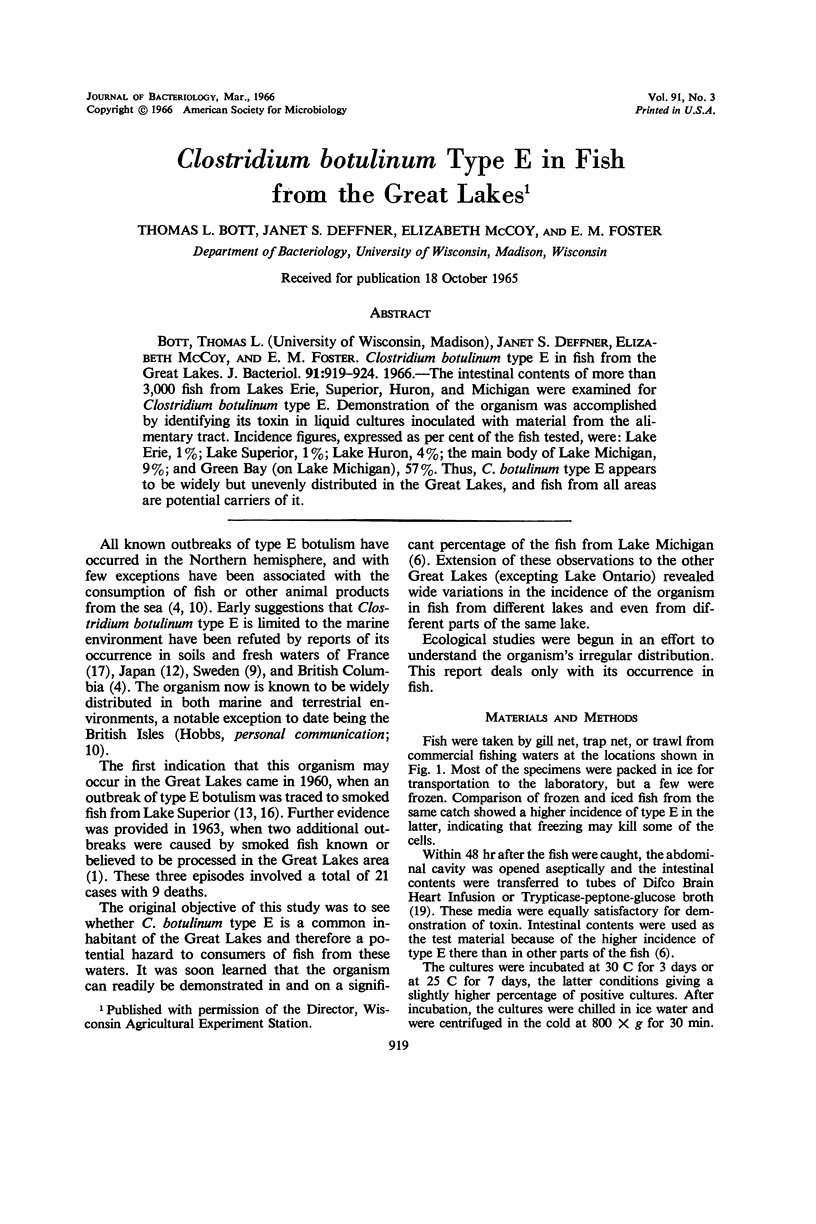
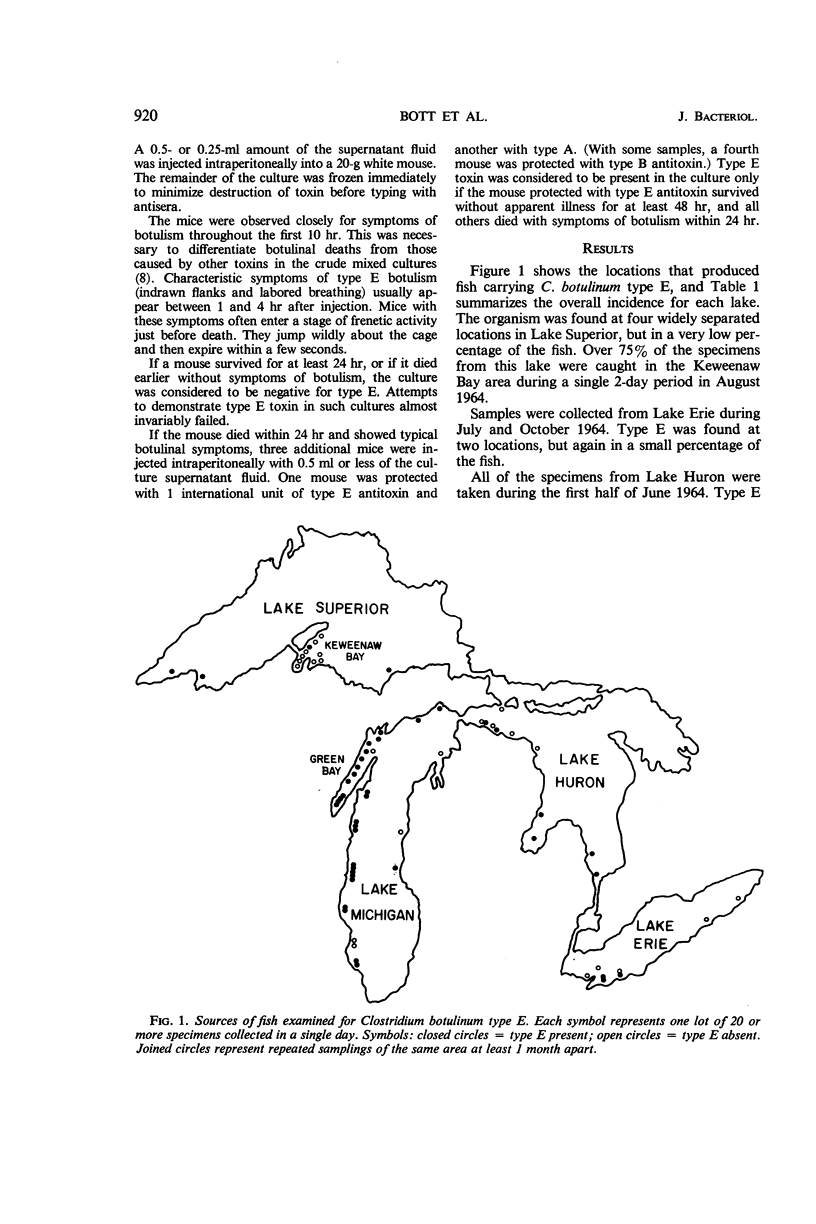
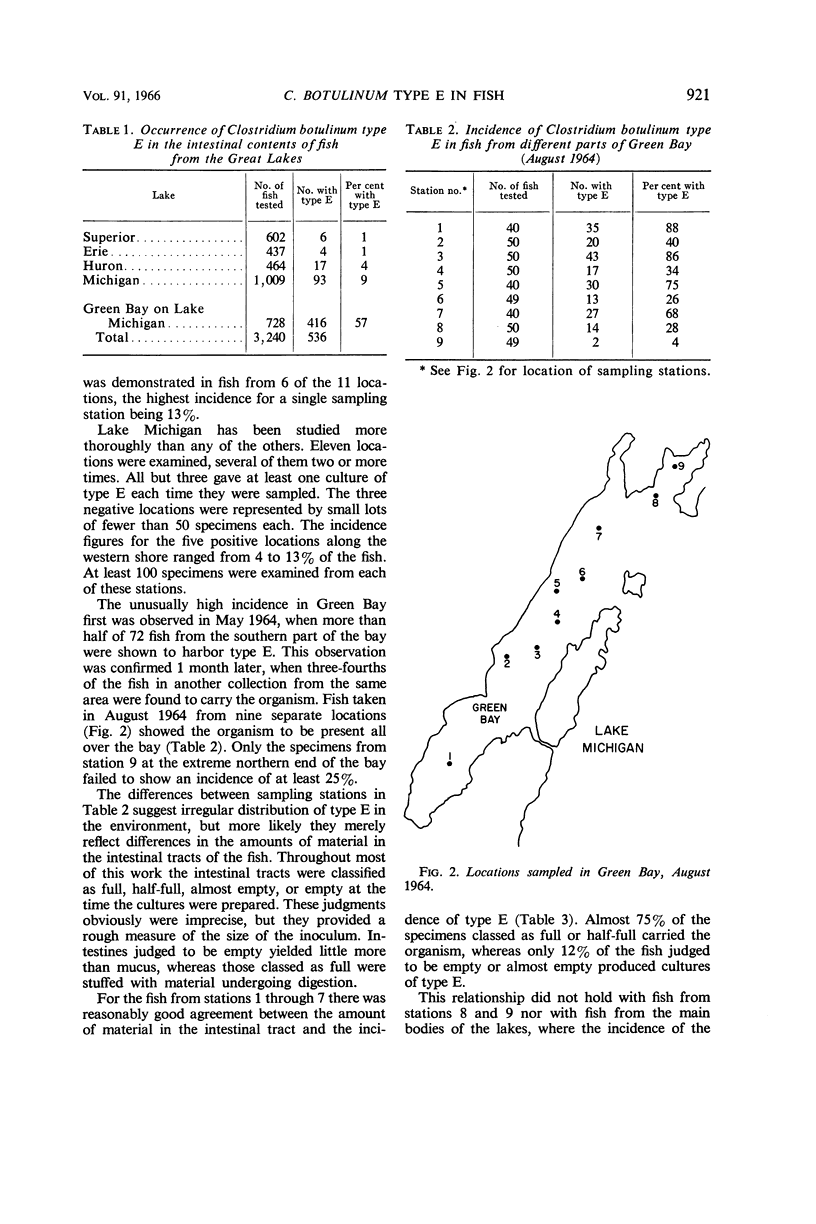
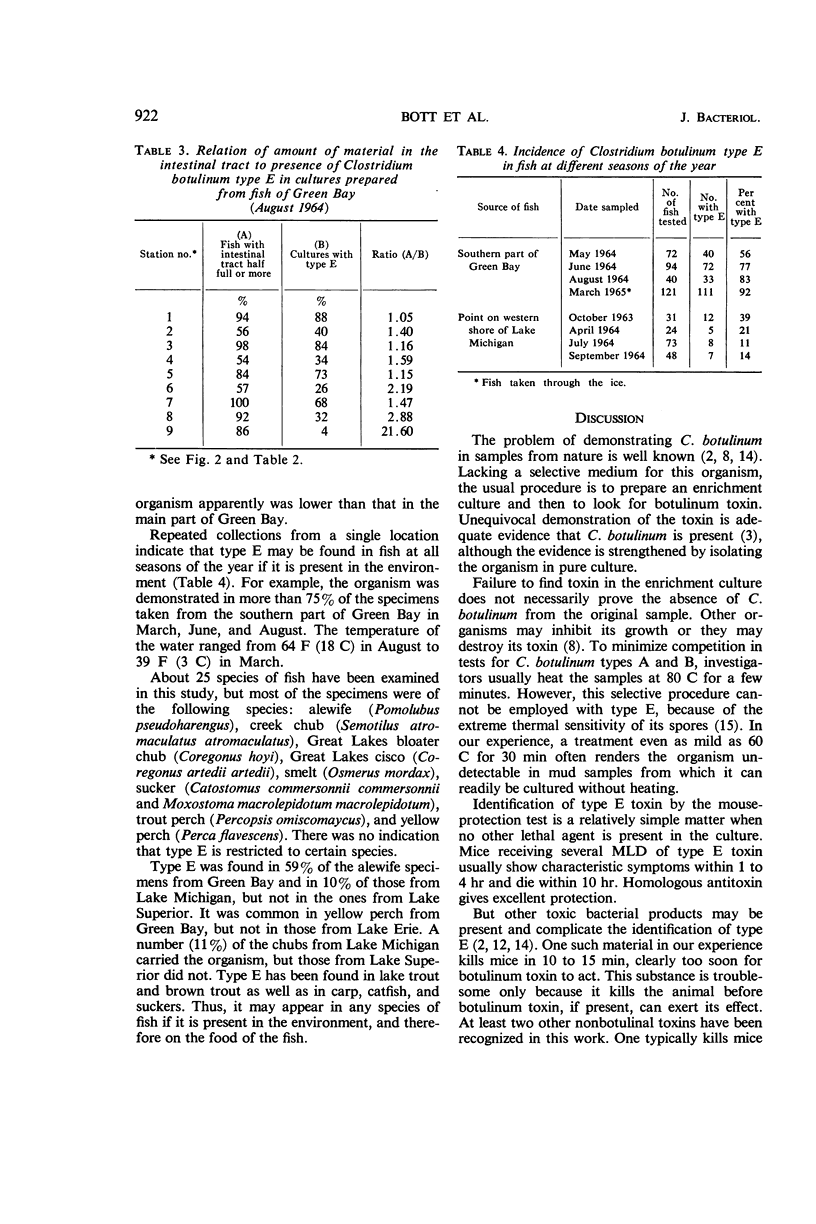
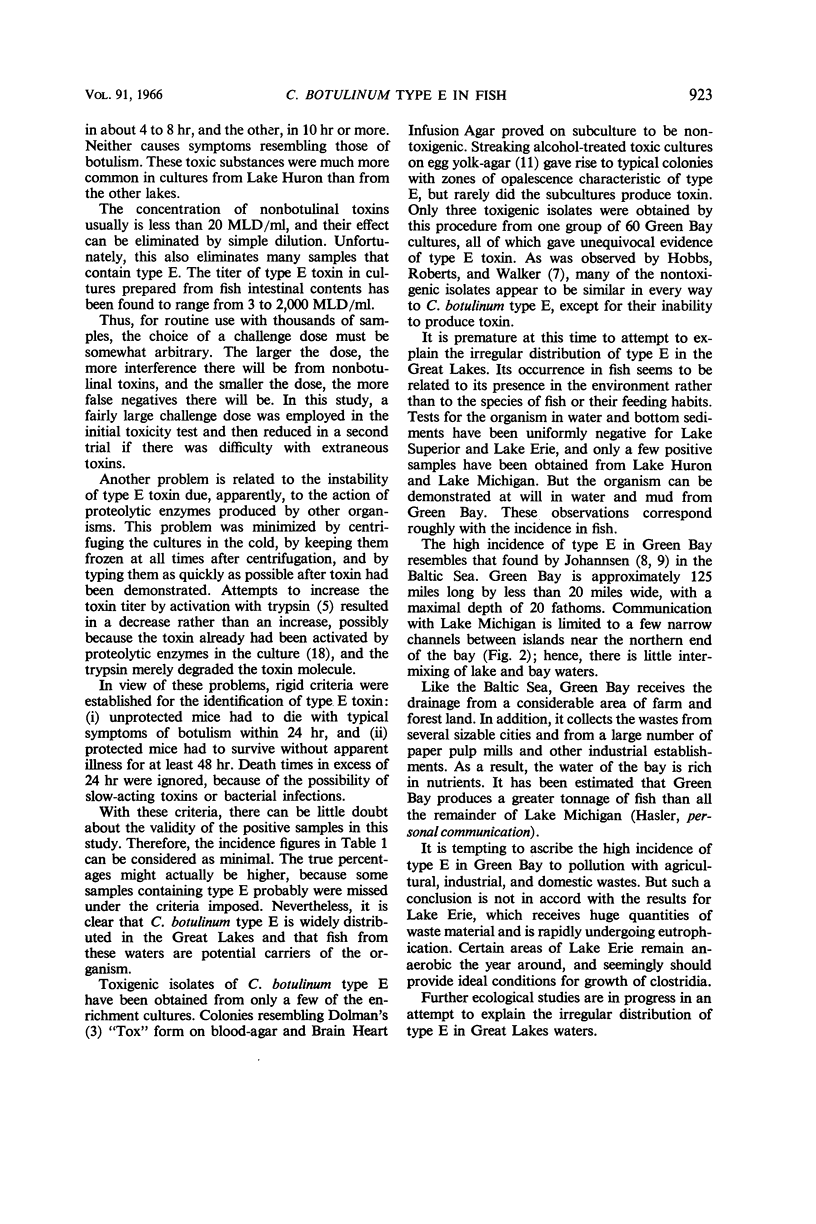
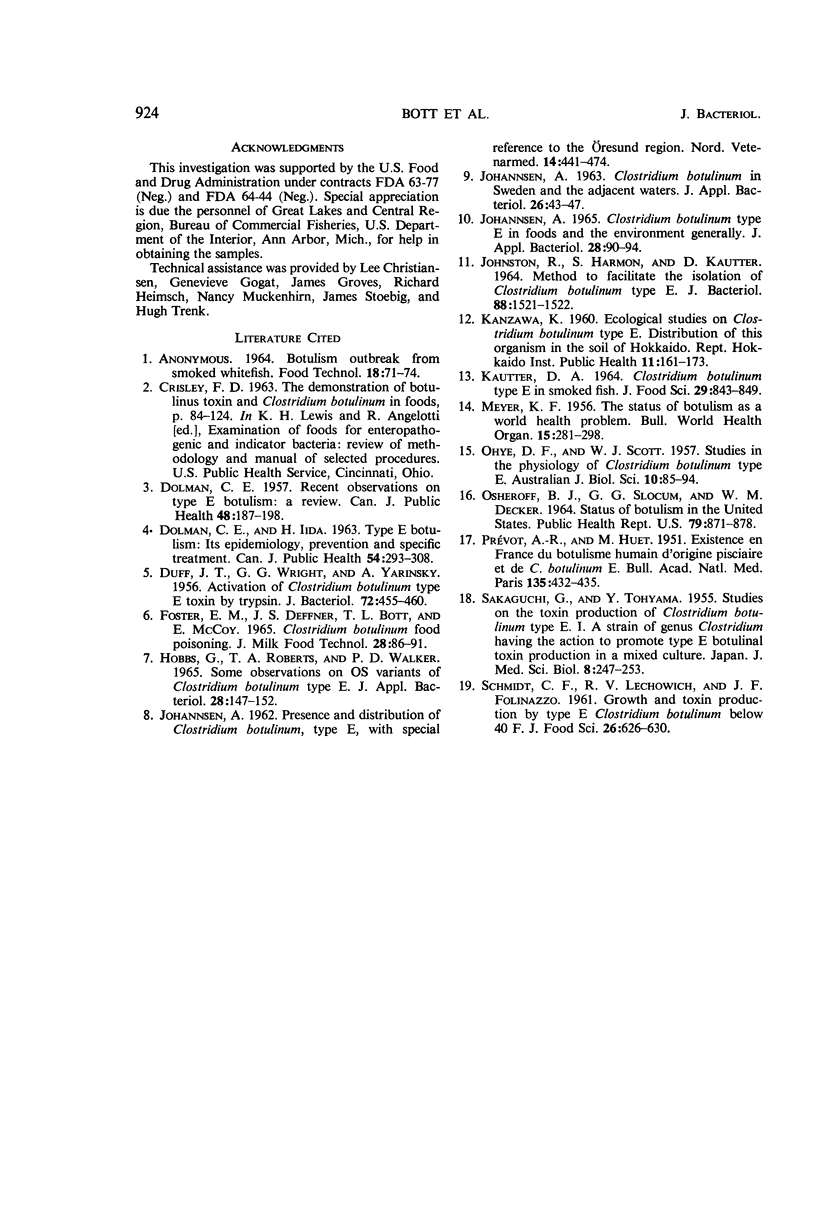
Selected References
These references are in PubMed. This may not be the complete list of references from this article.
- DOLMAN C. E., IIDA H. Type E botulism: its epidemiology, prevention and specific treatment. Can J Public Health. 1963 Jul;54:293–308. [PubMed] [Google Scholar]
- DOLMAN C. E. Recent observations on type E botulism. Can J Public Health. 1957 May;48(5):187–198. [PubMed] [Google Scholar]
- DUFF J. T., WRIGHT G. G., YARINSKY A. Activation of Clostridium botulinum type E toxin by trypsin. J Bacteriol. 1956 Oct;72(4):455–460. doi: 10.1128/jb.72.4.455-460.1956. [DOI] [PMC free article] [PubMed] [Google Scholar]
- JOHNSTON R., HARMON S., KAUTTER D. METHOD TO FACILITATE THE ISOLATION OF CLOSTRIDIUM BOTULINUM TYPE E. J Bacteriol. 1964 Nov;88:1521–1522. doi: 10.1128/jb.88.5.1521-1522.1964. [DOI] [PMC free article] [PubMed] [Google Scholar]
- MEYER K. F. The status of botulism as a world health problem. Bull World Health Organ. 1956;15(1-2):281–298. [PMC free article] [PubMed] [Google Scholar]
- OSHEROFF B. J., SLOCUM G. G., DECKER W. M. STATUS OF BOTULISM IN THE UNITED STATES. Public Health Rep. 1964 Oct;79:871–878. [PMC free article] [PubMed] [Google Scholar]
- PREVOT A. R., HUET M. Existence en France du botulisme humain d'origine pisciaire et de C1. botulinum E. Bull Acad Natl Med. 1951 Jul 17;135(25-26):432–435. [PubMed] [Google Scholar]
- SAKAGUCHI G., TOHYAMA Y. Studies on the toxin production of Clostridium botulinum type E. I. A strain of genus Clostridium having the action to promote type E botulinal toxin production in a mixed culture. Jpn J Med Sci Biol. 1955 Jun;8(3):247–253. doi: 10.7883/yoken1952.8.247. [DOI] [PubMed] [Google Scholar]


